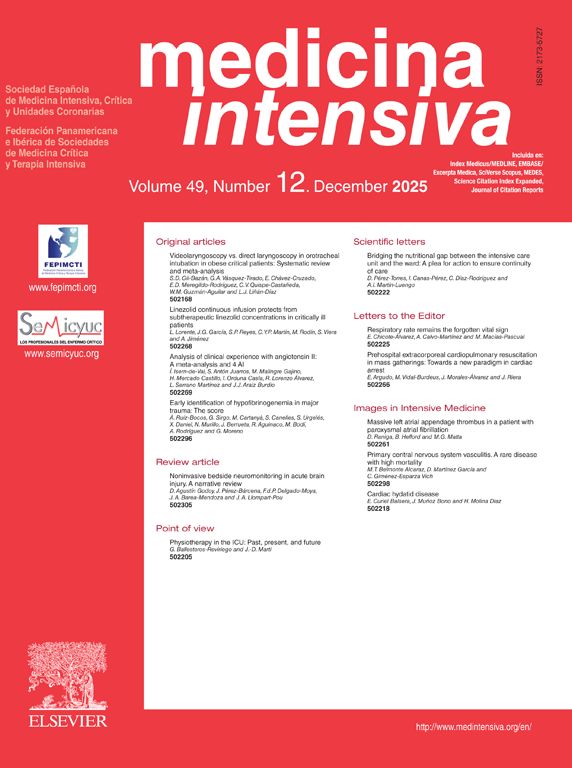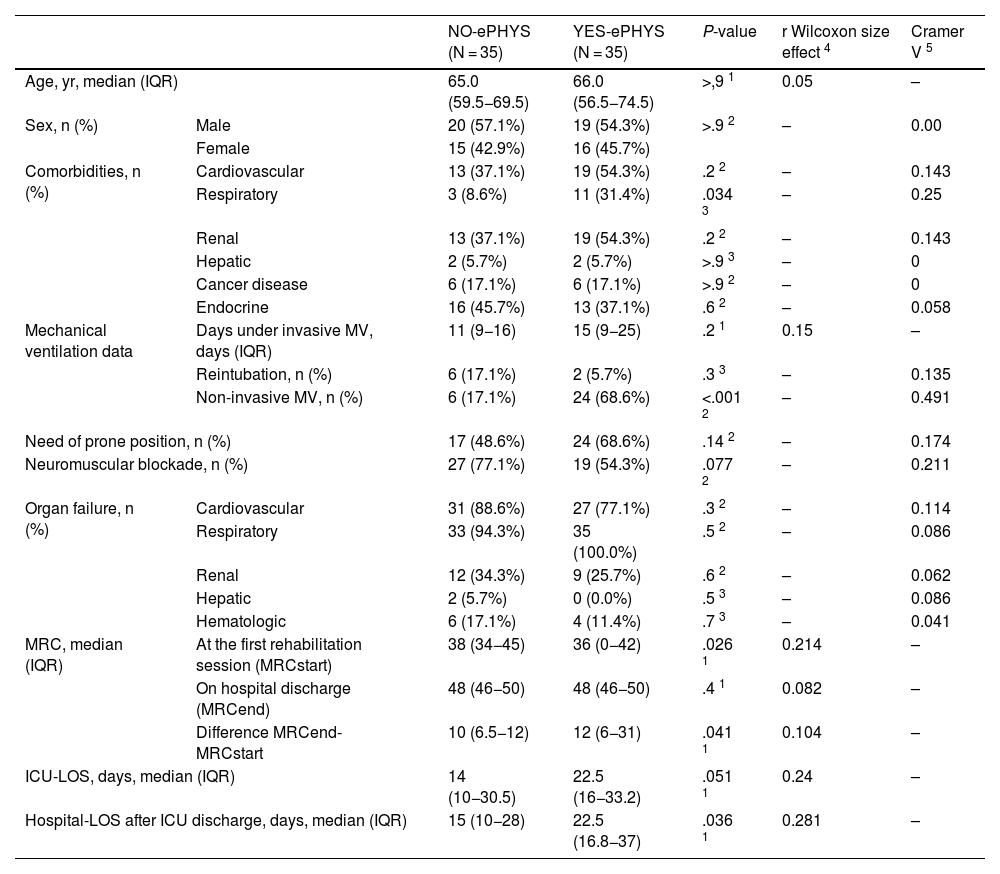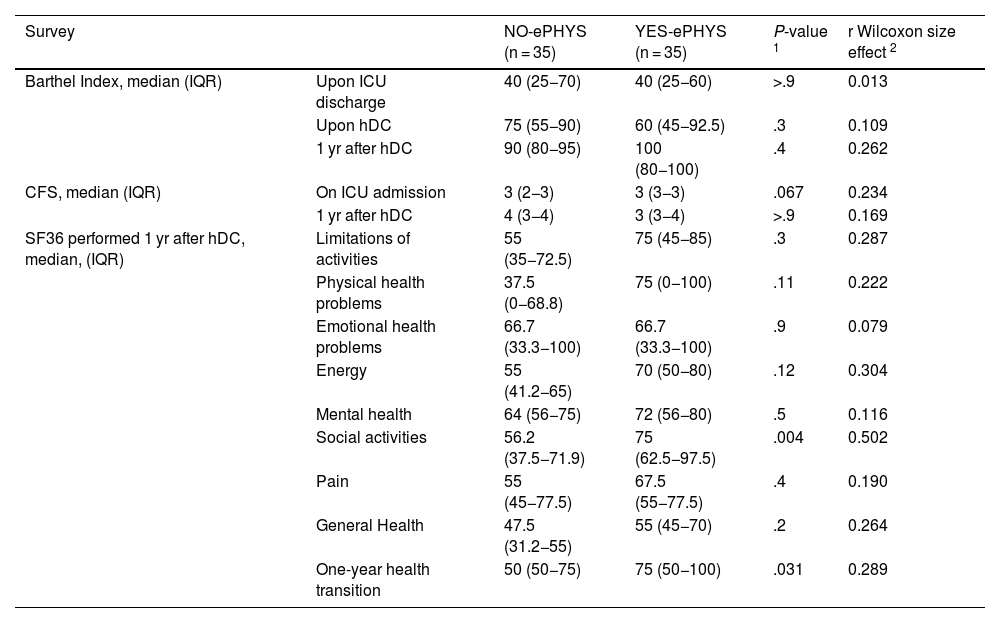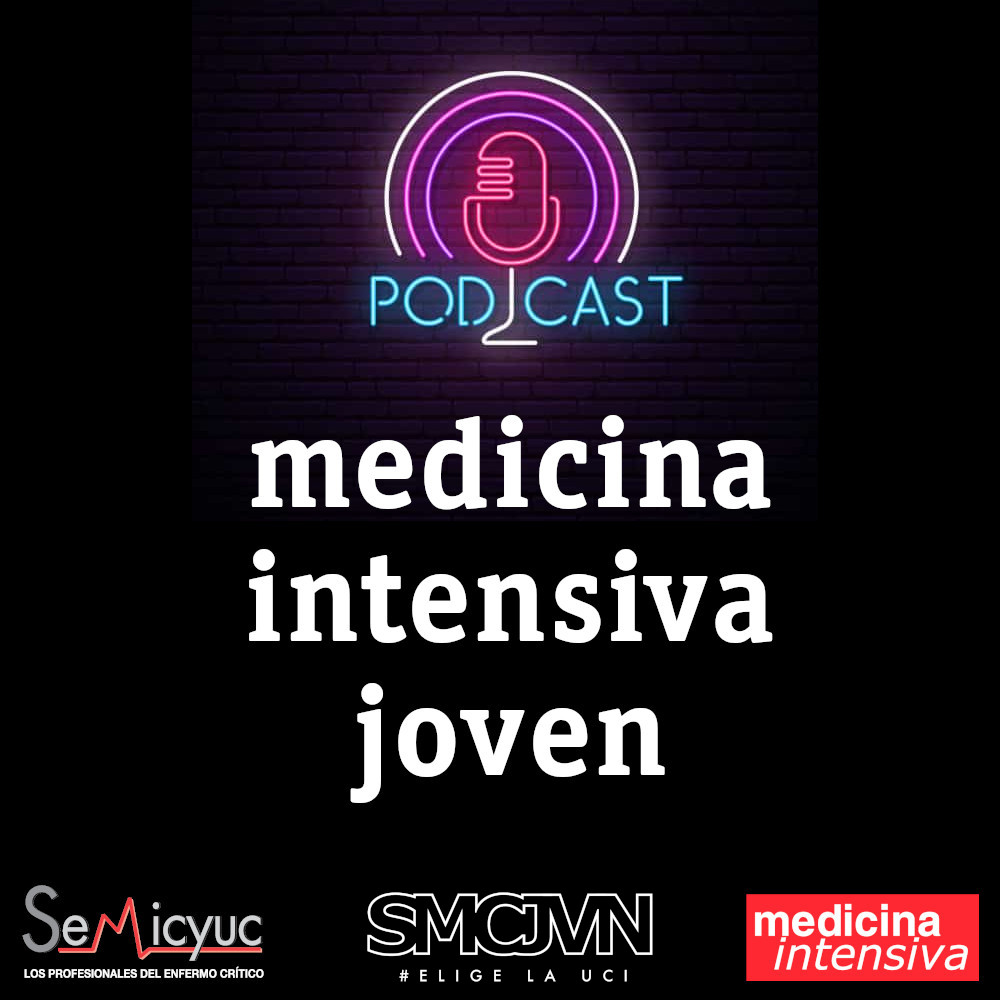To analyze the effect of early physiotherapy (ePHYS) on patients' functional quality of life one year after discharge.
DesignProspective observational study.
SettingsAdult polyvalent ICU.
Patients or participantsPatients with SARS-CoV2 pneumonia requiring invasive mechanical ventilation between March 2020 and July 2022.
InterventionEarly physiotherapy.
Main variables of interestQuality of life measured by CFS, Barthel and SF36 on ICU admission, at hospital discharge and one year after hospital discharge.
ResultsNinety-nine patients included. In the raw data analysis we observed statistically significant differences in SAPS-3 (MdnNo-ePHYS = 59 [53.5–64.5]; MdnYes-ePHYS = 53 [47–58]; P = .001). After propensity score, we did not observe statistically significant differences except for two SF-36 items: social activities (MdnNo-ePHYS = 56.2 [37.5−71.9]; MdnYes-ePHYS = 75 [62.5−97.5]; P = .004; Wilcoxon r effect size = 0.5) and one-year health transition (MdnNo-ePHYS = 50 [50−75]; MdnYes-ePHYS = 75 [50−100]; P = .031; Wilcoxon r effect size = 0.29), where patients who belonged to NO-ePHYS had lower scores than those who did receive ePHYS.
ConclusionsDespite not having found statistically significant differences in most of the items assessed, we should highlight that patients who received ePHYS reported a clear positive influence on their lives.
Analizar el efecto de la fisioterapia precoz (FTSPe) sobre la calidad de vida funcional de los pacientes un año después del alta.
DiseñoEstudio observacional prospectivo.
ÁmbitoUCI polivalente de adultos.
Pacientes o participantesPacientes con neumonía por SARS-CoV2 que requirieron ventilación mecánica invasiva entre marzo de 2020 y julio de 2022.
IntervencionesFisioterapia precoz.
Variables de interés principalesCalidad de vida medida mediante CFS, Barthel y SF36 al ingreso en UCI, al alta hospitalaria y un año después del alta hospitalaria.
ResultadosNinety-nine pacientes incluidos. En el análisis de datos brutos observamos diferencias estadísticamente significativas en SAPS-3 (MdnNo-FTSPe = 59 [53,5–64,5]; MdnSí-FTSPe = 53 [47–58]; P = ,001). Tras la puntuación de propensión, no observamos diferencias estadísticamente significativas excepto en dos ítems del SF-36: actividades sociales (MdnNo-FTSPe = 56,2 [37,5–71,9]; MdnYes-FTSPe = 75 [62,5–97,5]; P = ,004; tamaño del efecto de Wilcoxon r = 0.5) y la transición de salud a un año (MdnNo-FTSPe = 50 [50−75]; MdnSí-FTSPe = 75 [50−100]; P = ,031; tamaño del efecto r de Wilcoxon = 0,29), donde los pacientes que pertenecían a NO-FTSPe tenían puntuaciones más bajas que los que sí recibieron FTSPe.
ConclusionesA pesar de no haber encontrado diferencias estadísticamente significativas en la mayoría de los ítems evaluados, cabe destacar que los pacientes que recibieron ePHYS refirieron una clara influencia positiva en sus vidas.
Article
Go to the members area of the website of the SEMICYUC (www.semicyuc.org )and click the link to the magazine.








